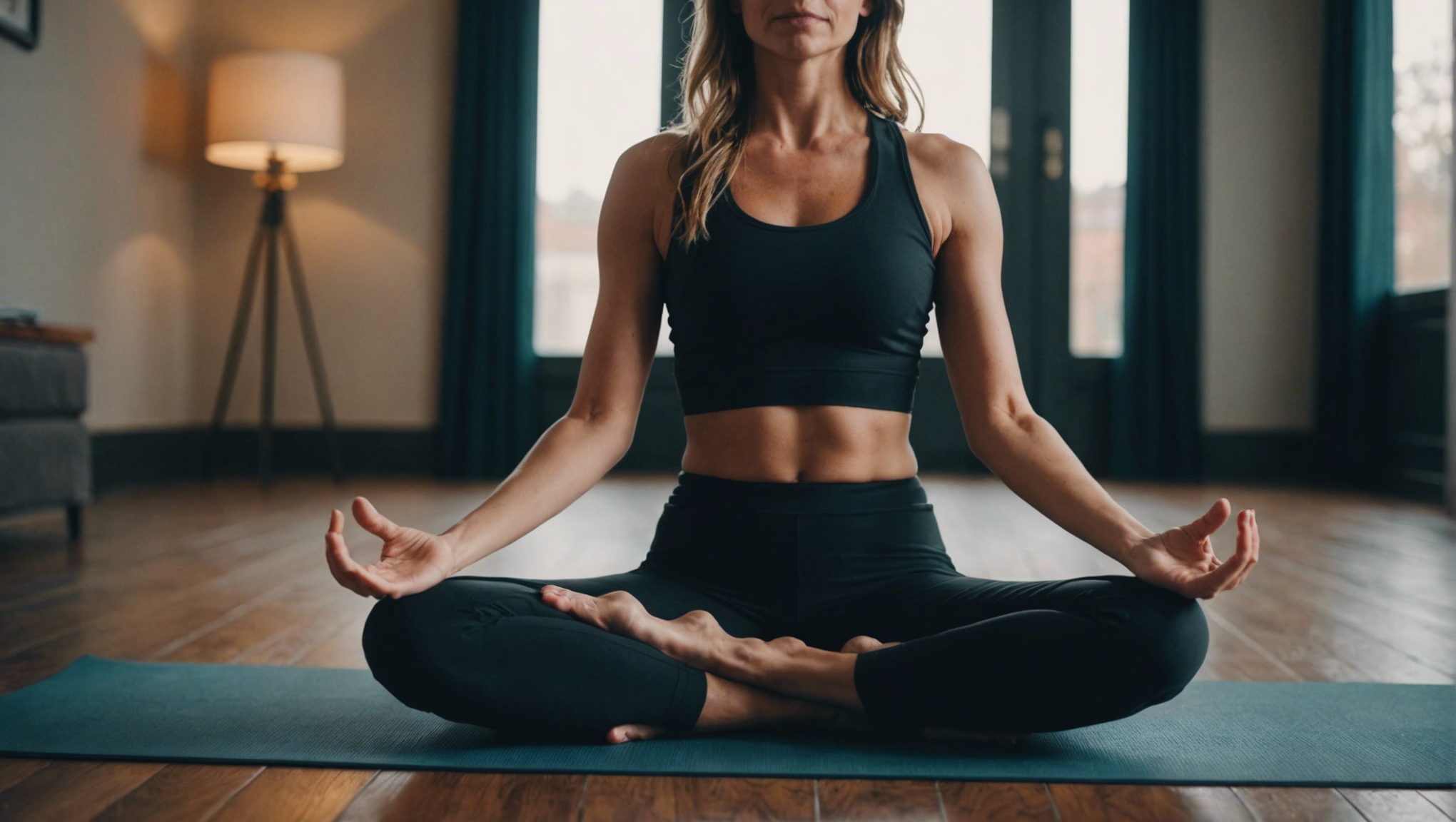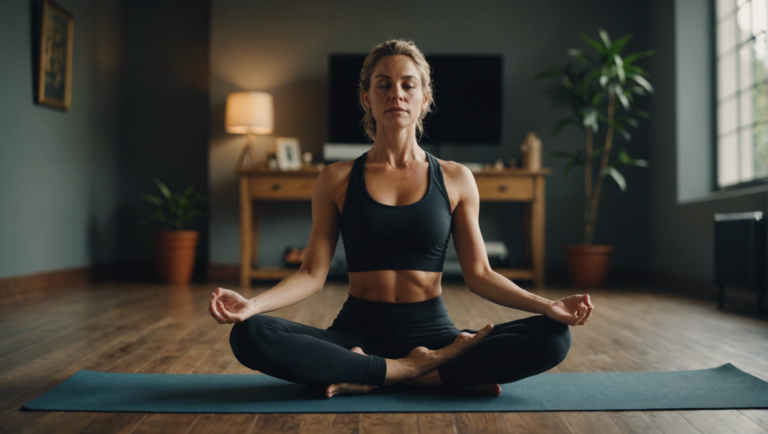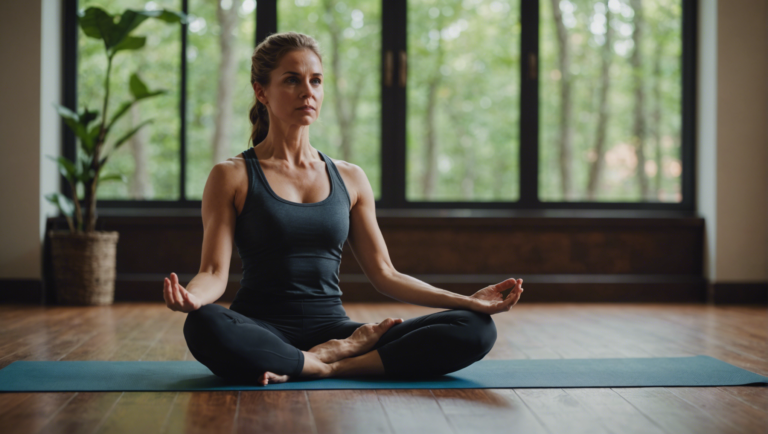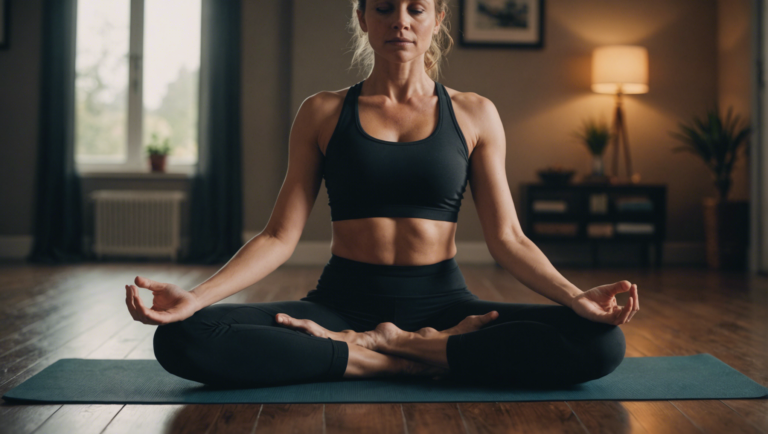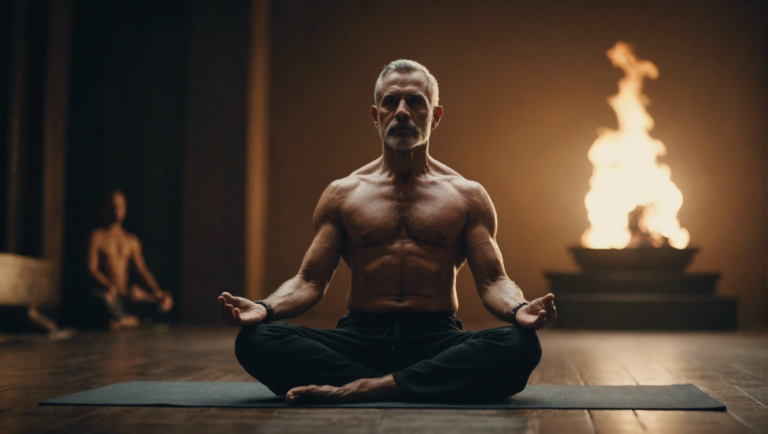Practicing Yoga Safely After A C-Section: A Comprehensive Guide
Navigating the Journey to Yoga Post-C-Section: Strategies for Safe Practice
Understanding Your Body After a C-Section
Navigating the path back to physical activity after a c-section requires patience, understanding, and a gentle approach. A caesarean section is a significant abdominal surgery, and the body needs ample time to heal. Before starting any postpartum yoga routine, it’s critical to get the green light from a healthcare provider, which usually comes at the six-week postoperative mark. However, this clearance is just the beginning. Recognizing that every woman’s recovery is unique is essential in setting realistic expectations for returning to yoga or any form of exercise.
Building a Foundation with Gentle Yoga
Once you have received approval from your healthcare professional, beginning with gentle yoga is a safe and effective way to reintroduce physical activity. Focus on poses that strengthen the pelvic floor and abdominal muscles without putting undue stress on your healing incision. Breathwork, or pranayama, is also beneficial during this time, encouraging relaxation and stress reduction while aiding the body’s natural healing processes.
Here are some safe poses to consider:
- Cat-Cow (Marjaryasana-Bitilasana) for gentle flexion and extension of the spine.
- Pelvic Tilts to engage and strengthen the pelvic floor.
- Legs-Up-The-Wall (Viparita Karani) for relaxation and mild inversion benefits.
It’s equally important to avoid intense abdominal exercises, deep backbends, and strong twists until your healthcare provider advises that your body is ready to handle more challenging poses.
Listening to Your Body’s Signals
Listening to your body is paramount when practicing yoga after a c-section. The concept of "no pain, no gain" does not apply here. Instead, honor what your body is telling you. If a pose feels uncomfortable or you experience pain, ease out of the pose and rest. Remember, the postpartum journey is not a race. Gradually increasing the intensity and duration of your practice over time allows your body to adapt safely.
Integrating Restorative Yoga for Healing
Restorative yoga can be a powerful tool for healing and recovery post-c-section. This yoga style focuses on relaxation and healing, utilizing props to support the body in passive poses. It encourages deep relaxation, which can promote healing and a return to balance and vitality. Positions such as Supported Child’s Pose and Reclining Bound Angle Pose can be particularly nurturing during this recovery phase.
Seeking Professional Guidance
While embarking on your yoga journey post-c-section, it may be helpful to work with a yoga instructor experienced in postnatal yoga. A knowledgeable instructor can provide personalized guidance, modifications, and support to ensure your practice is safe and beneficial. Additionally, joining a postnatal yoga class can offer the added benefit of community and support from other new mothers navigating their own recovery journeys.
The Path Forward: Integrating Mindfulness and Patience
As you gradually build your practice, integrate mindfulness and patience into your routine. Yoga is not only about the physical poses but also about cultivating a deeper awareness of the body and mind. Embrace this time to connect with yourself, acknowledging the strength and resilience of your body. Celebrate the progress, no matter how small, and remember that recovery and healing are not linear.
Practicing yoga safely after a c-section involves more than just physical care; it’s a holistic journey that encompasses mental, emotional, and spiritual well-being. By approaching this journey with patience, listening to your body, and seeking appropriate guidance, you can support your healing process and gradually return to a fulfilling yoga practice that nurtures your body and soul.
Understanding Your Body’s Healing Process After Cesarean Delivery
Navigating the journey of recovery following a cesarean delivery envelops both physical and emotional dimensions. Grasping the intricacies of your body’s healing process is paramount, as it not only fosters a quicker recuperation but also empowers you with the knowledge to care for yourself effectively during this critical period. This exploration will delve into the post-cesarean healing trajectory, offering insights and guidance for navigating this unique postpartum experience.
Understanding the Immediate Postoperative Period
The initial phase after a cesarean section is marked by significant physical recovery challenges. Pain management and wound care are at the forefront of concerns during this time. Pain, which may be acute, is managed through medications prescribed by healthcare providers, emphasizing the importance of following their guidance meticulously to avoid complications. Equally crucial is the care for the incision site, keeping it clean and dry to ward off infection and promote healing.
Recognizing the Signs of Possible Complications
Awareness of potential complications following a cesarean delivery is crucial for timely intervention and treatment. Warning signs such as fever, excessive or foul-smelling vaginal discharge, and increasing pain or redness at the incision site should prompt immediate medical consultation. Understanding these indicators can significantly impact the efficiency of response and the overall recovery trajectory.
The Journey of Emotional Healing
The emotional recovery after a cesarean can be as challenging and complex as the physical aspect. Feelings of disappointment or a sense of loss regarding the birth experience are not uncommon. Providing space for these emotions, acknowledging them, and seeking support through counseling or support groups can be incredibly beneficial. It’s essential to recognize the uniqueness of every woman’s postpartum journey and offer non-judgmental support and understanding.
Engaging in Physical Activity Wisely
Gradual reintroduction of physical activity after a cesarean is vital for enhancing recovery and wellbeing. Initially, focus should be on gentle activities, such as walking, making sure to listen to your body and avoid overexertion. Over time, as healing progresses, more strenuous activities can be incorporated, always with the approval of a healthcare provider. This careful, paced approach aids in avoiding strain on the healing incision and promoting overall physical health.
The Role of Nutrition in Healing
Nutrition plays a critical role in recovery after a cesarean section. A diet rich in vitamins, minerals, and protein supports wound healing and overall health. Hydration is equally important, as adequate fluid intake is essential for milk production in breastfeeding mothers and for the facilitation of the body’s healing processes. Emphasizing the consumption of a balanced, nutrient-dense diet can significantly impact the speed and quality of recovery.
Rest and Sleep: The Cornerstones of Recovery
Adequate rest cannot be overemphasized in the post-cesarean recovery process. Sleep and rest are foundational for physical healing and emotional well-being. However, the demands of a newborn often make extended periods of rest challenging. Strategies such as seeking help from family or friends, utilizing resources like postpartum doulas, and embracing short naps throughout the day can be instrumental in ensuring the necessary rest is achieved.
Long-Term Healing Considerations
Beyond the immediate postpartum period, long-term healing from a cesarean section involves ongoing care and awareness of one’s body. Scar tissue management, for example, may include specific exercises or massage to prevent adhesions and ensure mobility. Additionally, considerations for future pregnancies, such as discussions around the possibility of a vaginal birth after cesarean (VBAC), are important discussions to have with healthcare providers.
The journey of recovery following a cesarean section is a testament to the resilience of the human body and spirit. By understanding the healing process, recognizing the signs of complications, and adopting strategies for physical and emotional recovery, women can navigate this postpartum path with confidence and strength. Empowerment through knowledge and support lays the foundation for a healthy and fulfilling post-cesarean recovery experience.
Essential Yoga Poses for Post-C-Section Recovery: What Works and What to Avoid
Navigating the journey to recovery after a cesarean section (C-section) involves patience, care, and a gentle reintroduction to physical activities. Yoga, known for its restorative and healing properties, can be a beneficial practice for new mothers healing from a C-section. However, it’s crucial to approach yoga with caution, being mindful of the body’s limits and specific poses that can aid or impede post-C-section recovery. In this comprehensive guide, we delve into the essential yoga poses suited for post-C-section recovery, highlighting what works best and what should be avoided to ensure a safe and effective yoga practice.
Yoga Poses to Embrace for Post-C-Section Recovery
The journey of recovery after a C-section requires a gradual approach to physical activity. Yoga can offer gentle, strengthening poses that enhance healing without straining the body. These poses focus on rebuilding core strength, enhancing flexibility, and reducing stress.
Pelvic Tilts
A foundational exercise, pelvic tilts engage and gently strengthen the abdominal muscles, aiding in the recovery process. They are ideal for slowly regaining core strength without exerting undue pressure on the C-section incision.
Supported Bridge Pose
This modified form of the Bridge Pose uses support, such as a yoga block, to alleviate pressure on the abdomen while gently engaging the core and buttocks. It aids in restoring pelvic floor strength while being mindful of the healing process.
Legs Up the Wall
Known for its relaxing benefits, Legs Up the Wall is a passive pose that helps in reducing swelling and improving circulation. It’s particularly beneficial for new mothers looking to find a moment of tranquility and gentle leg recovery.
Yoga Poses to Avoid After a C-Section
While yoga offers numerous benefits, certain poses can be counterproductive or even harmful during the initial stages of C-section recovery. It’s crucial to avoid poses that place direct pressure on the abdomen, require deep twists, or intense backbends until fully healed.
Deep Twists
Twisting poses can be too demanding on the midsection as it recovers from surgery. Deep twists can put unnecessary strain on the abdominal muscles, potentially impeding the healing process.
Full Cobra Pose
While gentle backbends can be beneficial later in the recovery process, Full Cobra Pose places undue stress on the abdominal area, risking the healing of the C-section incision. It’s essential to avoid this pose until the doctor advises that deeper backbends are safe.
Advanced Abdominal Poses
Poses that require significant abdominal strength, such as Boat Pose, should be avoided in the early stages of recovery. These poses can strain the healing tissues and should only be reintroduced with caution and under professional guidance.
Navigating Your Yoga Practice Post-C-Section
Engaging in yoga after a C-section demands awareness and listening to your body’s signals. It’s advisable to start with a professional instructor who can provide guidance tailored to post-C-section recovery. Always communicate any discomfort and ensure modifications are made to support your healing journey.
It’s equally important to have clearance from your healthcare provider before starting any form of physical exercise post-C-section. They can offer personalized advice based on your recovery progress and any complications that might influence when and how you should resume physical activities.
The Path Forward
Yoga can be a beautiful part of your recovery journey after a C-section, offering not just physical benefits but also emotional and mental support. By choosing poses that align with your body’s current state and respecting the boundaries of your recovery, you can safely enjoy the healing powers of yoga. It’s a path marked by patience, gentle progress, and immense self-care, leading to a stronger, revitalized you.
Turning to yoga as a means of recovery post-C-section is a testament to the resilience of the human body and spirit. With careful selection of poses and an acute awareness of the body’s limitations and needs, yoga can effectively support women in their journey towards full recovery, embodying the principles of self-care and mindfulness.
Integrating Mindfulness and Breathwork into Postpartum Yoga Routines
Understanding the Importance of Mindfulness and Breathwork in Postpartum Recovery
The journey through pregnancy to motherhood brings profound changes, not just physically but emotionally and mentally. In the delicate postpartum period, nurturing oneself is as crucial as caring for the newborn. Among the myriad ways to heal and regain strength, yoga emerges as a gentle yet powerful ally. However, beyond the asanas (physical postures), integrating mindfulness and breathwork into postpartum yoga routines holds the key to deeper healing and recovery.
The Role of Mindfulness in Healing the Postpartum Body and Mind
Mindfulness, the practice of being present in the moment without judgment, is particularly beneficial after childbirth. This practice can help new mothers navigate the emotional rollercoaster of postpartum life, reducing stress and increasing the capacity for joy and connection with their baby. Mindfulness during yoga allows for an inner dialogue of compassion and acceptance, helping mothers to honor their bodies’ journey and the transformative process of childbirth.
Breathwork: The Foundation of Postpartum Yoga Practice
Breathwork, or Pranayama, is an integral component of yoga that focuses on controlling breath to influence mental, emotional, and physical state. For women recovering from childbirth, breathwork can be profoundly soothing and restorative. Deep, conscious breathing can help to address physical discomforts such as muscle tension and fatigue, as well as emotional stresses, providing a sense of calm and grounding.
Steps to Integrating Mindfulness and Breathwork into Your Routine
Begin with Intention Setting
Before starting your yoga practice, take a few moments to set an intention. This could be a word or phrase that embodies what you wish to cultivate in your session—be it peace, healing, strength, or simply breath awareness. This intention serves as a reminder to stay present and focused during your practice.
Focus on Gentle Asanas
Choose gentle, restorative postures that encourage healing and connection to your body. Avoid strenuous poses or those that put pressure on the abdomen. Instead, focus on poses that promote relaxation and open the heart and hips, such as Cat-Cow, Child’s Pose, and Supine Bound Angle Pose.
Incorporate Diaphragmatic Breathing
Diaphragmatic breathing, or belly breathing, is especially beneficial in the postpartum period. It promotes relaxation and stress reduction, and can enhance the body’s healing process. Integrate this form of breathwork by placing one hand on your belly and the other on your chest, ensuring that your belly rises more than your chest as you inhale deeply through the nose.
Practice Mindfulness through Movement
As you move through each pose, do so with mindfulness, paying attention to the sensations in your body, the rhythm of your breath, and any emotions that arise. This awareness creates a meditative state, nurturing a deep sense of peace and connection to oneself.
Advancing Your Practice with Visualization
To deepen your mindfulness and breathwork practice, incorporate visualization. As you breathe deeply, visualize healing energy entering your body with each inhalation and tension or pain leaving with each exhalation. This technique can amplify the restorative effects of your yoga practice, enhancing physical and emotional well-being.
Encouraging Patience and Persistence
Embracing mindfulness and breathwork in your postpartum yoga routine is a journey of self-discovery and healing. It’s important to approach this practice with patience and gentleness, allowing your body and mind to heal at their own pace. Remember, each day is different, and what matters most is showing up for yourself with kindness and compassion.
By weaving mindfulness and breathwork into your yoga practice, you nurture not only your physical recovery but also cultivate a sanctuary of peace and resilience in the postpartum period. This holistic approach to healing harmonizes body, mind, and spirit, offering a foundation of strength and serenity to navigate the challenges and joys of new motherhood.
Building Strength and Flexibility Safely: A Step-by-Step Guide for Post-C-Section Yogis
Embarking on a journey to reclaim your body’s strength and flexibility after a cesarean section (C-section) can be both exhilarating and daunting. Yoga, with its gentle movements and focus on mindfulness, offers an inviting path forward. However, the priority is to navigate this path safely, respecting the healing process and gradually building your capacity. This guide provides comprehensive steps to help post-C-section yogis start their regimen with confidence, ensuring a balance between physical recovery and spiritual renewal.
Welcoming Yoga into Your Post-C-Section Recovery
The first and perhaps most crucial step is to secure your doctor’s approval before starting any postpartum exercise, including yoga. The timeline for when you can begin practicing again varies based on individual recovery, but it’s generally advised to wait until after your postnatal checkup, typically around 6-8 weeks post-delivery. This checkup ensures that your incision is healing properly and that your body is ready for physical activity.
Tailoring Your Yoga Practice for Safe Re-entry
When you have the green light to begin, start with yoga styles focused on restoration and healing. Avoid rigorous types of yoga such as Ashtanga or Bikram, which might be too intense for your recovery stage. Instead, opt for Gentle Yoga, Restorative Yoga, or specific postnatal classes that can help address and alleviate the unique physical concerns post-C-section, such as weakened abdominal muscles and pelvic floor.
Gradually Strengthening the Core and Pelvic Floor
Your core and pelvic floor have undergone significant strain and need cautious attention during your postpartum recovery. Engaging in poses that gently strengthen these areas without straining your C-section incision is vital. Poses like the Bridge and Pelvic Tilts can be beneficial. However, avoid traditional crunches or any intense core work initially, as these can exacerbate diastasis recti—a condition where the left and right abdominal muscles spread apart at the body’s midline.
Developing Flexibility with Mindful Stretching
Flexibility might take a back seat in the initial stages of your recovery, but incorporating gentle stretching exercises can aid in relieving post-surgery tightness and improving overall mobility. Focus on poses that enhance flexibility without putting pressure on your abdomen. Child’s Pose, Cat-Cow, and seated twists can offer gentle ways to limber up, promoting blood flow and enhancing healing.
Prioritizing Breathing and Mindfulness
The breathwork and mindfulness inherent in yoga are especially beneficial for post-C-section recovery. Techniques such as Pranayama (yogic breathing) help foster relaxation, reduce stress, and enhance the connection between mind and body. This mindful approach to practice can also help you honor your body’s signals, preventing overexertion.
Progressing with Patience and Care
Remember, the journey back to pre-pregnancy strength and flexibility is not a race. Be patient with your body, recognizing that recovery times vary widely among individuals. Gradually increase the intensity of your practice, staying attuned to your body’s feedback. If a particular movement feels uncomfortable, pause and consult your healthcare provider or a postnatal yoga specialist.
Consulting with a Postnatal Yoga Specialist
Seeking the guidance of a yoga instructor specialized in postnatal recovery can provide tailored advice and adjustments specific to your needs. A specialist can develop a customized yoga sequence that safely targets recovery areas, ensuring your practice supports healing without risk of injury.
Reintroducing yoga into your life after a C-section can be a profoundly positive experience, supporting not just physical healing but also offering mental and emotional benefits. By following these steps, you can safely rebuild strength and flexibility, turning your postpartum period into a time of gentle, nurturing recovery. This holistic approach not only aids in physical recuperation but also fosters a deeper sense of wellbeing and connection with your postpartum body.
Conclusion
Embarking on the practice of yoga after a cesarean section is a journey that merits careful navigation, blending patience, understanding, and mindfulness to foster healing and strength. This comprehensive approach to post-C-section yoga, outlined through strategic practice guidelines, deep dives into the body’s healing phases, curated yoga poses, the integration of mindfulness, and breathing techniques, alongside a careful, progressive plan to rebuild strength and flexibility, offers a blueprint for a holistic recovery and a return to yoga or an introduction to the practice for new mothers.
Navigating the complicated landscape post-cesarean involves a nuanced appreciation of your body’s remarkable healing capabilities. The initial weeks require rest and minimal physical exertion to allow the body to mend the deep incision. Understanding this process is crucial in setting realistic expectations for your yoga journey. It’s not merely about the physical healing but equally about nurturing mental well-being, recognizing that patience and self-compassion are your best allies in this period of recovery.
As one ventures into physical activity, discernment in the choice of yoga poses becomes indispensable. The focus here should not just be on what poses to incorporate but equally on what movements to sidestep to avoid strain on the healing tissues. Gentle, restorative yoga poses that do not exert pressure on the abdomen are recommended. Poses that involve stretching and opening the chest and shoulders can also be beneficial, as they counteract the rounding-forward posture often adopted during nursing or bottle-feeding. Avoidance of poses that stress the core muscles directly, such as intense backbends or deep twists, is prudent in the early stages of recovery. This selective approach ensures that the yoga practice enhances recovery, assisting in gentle strength building and flexibility without jeopardizing the healing process.
Moreover, the integration of mindfulness and breathwork into postpartum yoga routines imbues the practice with a layer of mental and emotional healing. Deep, conscious breathing not only facilitates physical relaxation but also aids in coping with the emotional rollercoaster that can accompany the postpartum period. Breathwork serves as a bridge, connecting the mind and body, allowing for a deeper introspection and awareness of the body’s cues and needs. This mindful approach to yoga transcends physical activity, embracing yoga as a comprehensive tool for wellness, anchoring the new mother in the present, helping her navigate the complexities of motherhood with grace and resilience.
Advancing towards rebuilding strength and flexibility must be approached with a phased, mindful strategy, acknowledging that the post-C-section body has unique needs and limitations. Beginning with foundational postures that center on stability and gradually introducing more dynamic poses to challenge the body, ensures a safe progression. This stepped approach not only safeguards the physical healing but also builds confidence, as tangible improvements in strength and flexibility become evident. It’s a testament to the body’s resilience and the empowering nature of engaging in a mindful yoga practice.
This holistic guide to practicing yoga after a cesarean section is designed not just to navigate the physical journey back to strength and flexibility but also to support the emotional and mental healing process. The pathway outlined through strategic practice, an understanding of the body’s healing, mindfully selected yoga poses, breathwork, and a considered progression in physical activity, underscores yoga as a multifaceted tool for recovery and wellness in the postpartum phase. It’s a practice that honors where the individual is at, cognizant of the scars borne, both seen and unseen, and offers a compassionate, comprehensive approach to healing. As new mothers embark on this journey, they are reminded that yoga is not just a physical practice but a nurturing, healing embrace, offering strength, flexibility, and tranquility on the path to recovery and beyond.
